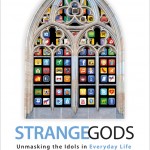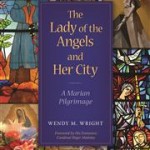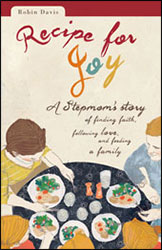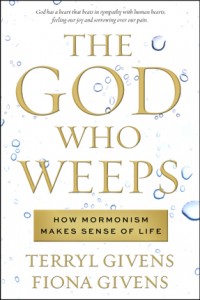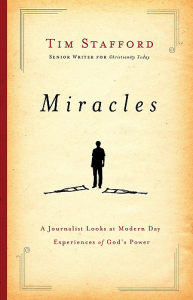 The material world does not need God’s miraculous interference; but God cannot deprive Himself of the power to interfere with it when He sees fit to do so. ~ Rev. Charles Coppins, SJ, A Brief Text-book of Logic and Philosophy, 1891
The material world does not need God’s miraculous interference; but God cannot deprive Himself of the power to interfere with it when He sees fit to do so. ~ Rev. Charles Coppins, SJ, A Brief Text-book of Logic and Philosophy, 1891
The world may not need miracles, but those of us living in it often seem to. Some more than others.
I welcomed the chance to review Tim Stafford’s new book Miracles: A Journalist Looks at Modern-Day Miracles from a Catholic standpoint for the Patheos Book Club even before Stafford’s topic jumped into the headlines via the stories of “miraculous” survivals of the Aurora shooting. We Catholics, after all, have a unique (if bipolar) relationship with miracles. We see them everywhere: in weeping statues and rosary chains turned to gold, in the Turin shroud and the E-Bay grilled cheese sandwich. And yet we’re remarkably blasé about them. We’re not, for the most part, a Church that goes on about miracles, or works them into our day-to-day ministry, even in those parts of what Tim Stafford calls “the majority world” where Western skepticism has not yet worked its unmagic, and where among Pentecostal Protestant missions, Stafford reports, “miracles seem to be the normal entry point for people becoming followers of Jesus” (p. 148). For Catholics, miracles are a kind of religious bling—nice to flash on special occasions, but not a necessary part of the wardrobe of faith.
Tim Stafford comes to his exploration from a distinctly different place. He is a journalist, but a religious journalist, not one looking to write a secular exposé. A Presbyterian for whom the charismatic strand of Christianity holds a special attraction, Stafford writes in part to answer his own spiritual questions. He confesses toward the start of Miracles:
All my life I’ve wanted God to show up in ways I can point to. I’ve never been totally satisfied with warm feelings and good morals alone; I want to see God at work in ways that can only be him. (p. 31)
That longing to see God in action is a kind of looking to miracles-as-proof that Stafford recognizes is both incomplete and unavoidable. In the best passages of Miracles, he leaves it behind, and approaches a sense of the role of miracle in the lives of followers of Jesus that Christians of all traditions and persuasions (including Catholics) can agree with and learn from. Miracles—in the Bible, in the apostolic age, today—are not meant to prove, but to point toward. They are, literally, signs of what is already in our midst and yet to come: the kingdom of God, in which sin and death are no more.
Miracles are signs pointing toward resurrection. Jesus did miracles that prefigured his resurrection. Our miracles are a foretaste of our resurrection, and of the renewal of the whole earth. (p. 200)
There are many other places in Miracles where Stafford’s way and mine diverge, however. Much of the book is devoted to exploring the modern Protestant Pentecostal/charismatic movement and the centrality of miraculous healings to that tradition. My own experience of the Catholic charismatic movement is limited, and though I respect those who find it a source of spiritual renewal, it was never my calling.
Stafford notes with what seems almost like a bit of envy that Catholics, alone among Christians, have a codified process for determining the veracity of miraculous cures (p. 53). He refers to the investigation, by the Congregation for the Causes of Saints, of miracles worked through the intercession of candidates for formal inclusion in the Church’s calendar of saints. One such miracle is required for a person to be beatified (called Blessed, and honored in local churches or religious congregations); another is needed for the Blessed to be named Saint and honored universally. (The old rules required as many as four miracles, at least two of them “first-class,” or demonstrably incapable of any explanation but divine intervention. When Pope John Paul II relaxed the rules for canonization in 1983, comedian Don Novello’s spot-on Fr Guido Sarducci character, “gossip columnist for L’Osservatore Romano,” lamented on Saturday Night Live, “Two stinking miracles? And one of them can be a card trick!”)
These miracles are the exception to the rule that miracles should not be used to prove anything; for the Church, they are proof that a person is already a participant in the eternal merits of Christ in heaven, and thus worthy to be called Saint. God makes saints; the Church only recognizes them, when the signs are there. Catholics also maintain the Board of Medicine at Lourdes, established by Pope Pius X to certify cures associated with the place of pilgrimage—so they would not be dismissed as card tricks.
Stafford goes very lightly over accounts of miracles from the centuries between the apostolic era and the charismatic renewal, dismissing as “legend” (p. 116) the countless wonders worked by saints and martyrs while they were alive or by intercession after their deaths. It’s important to remember, I’d argue, that the word legend can also apply to the coordinates on a map, so these too are signs pointing the way to the kingdom, if more ornately curlicued than the highway signs Stafford likes to use as an analogy. And he can’t quite disguise his sniff of Protestant revulsion when it comes to miracles associated with relics and other material objects (p. 124)—though as a good Reformer he’s quick to point out that these have been a lucrative revenue stream for Catholicism (p. 125). Stafford does stop short of Calvin’s condemnation of all post-biblical miracles, which would have called into question the modern-day miracles he covers in the book.
The chapters on the Pentecostal revival in the United States and around the world were, for me, only mildly interesting and something of a distraction from the topic of miracles. Even more problematic—especially for a book that claims to be aimed at those in the middle ground between unquestioning belief and complete skepticism (pp. 22-23)—is the chapter entitled Can a Scientist Believe in Miracles?, in which Stafford veers off into an attack on the New Atheism, and methinks protests too much.
But Stafford’s penultimate chapter, What We Know and How We Should Use It, should be required reading for Christians across the board, whatever their stance toward miracles. There’s rich material here for opening up and discussing—I wish Stafford had used the practical suggestions for approaching miracles from this chapter as the outline for the book!—and for putting into practice. It’s a miracle of clarity, and I recommend you start reading Miracles there, on page 199.
Myself, I’m going to start with one of Stafford’s least Catholic suggestions: Seek miracles in community. Maybe it’s time to haul that bling out of the safe-deposit box more often, and bring it to the party.
_____
Visit the Patheos Book Club to read an excerpt from Tim Stafford’s Miracles: A Journalist Looks at Modern-Day Experiences of God’s Power and to explore other bloggers’ responses to the book. At the same link, you can join a live chat with Tim Stafford about his new book and share your own experiences of modern miracles on Wednesday, July 25, from 2-3 pm EST.


